Ah, the Gothic novel. There is no other genre that revels so in its tropes. The naïve young waif, the misted moors, the careening carriage, the possibly/most probably murderous male love interest, the gutted mansion, the keening ghosts. A graveyard visit is a near requirement. A family secret, generally involving a murder or two, is a must. An atmosphere of dread keeps the reader’s heart racing and lungs from breathing, for clouded in the fogs and dark corners is the Unspoken.
When we think of gothic novels, we think, immediately, of Jane Eyre, Wuthering Heights, The Woman in White, The Yellow Wallpaper. We think of all the women who are in peril or under threat of death or who must discover their own agency in worlds controlled by men. Let us start with Jane Eyre herself. She is plain, unassuming, an orphan, and yearning for any stability that can be had. As governess of Thornfield manor, she is under the eye of its owner, Rochester, and as the story goes, eventually married to the man. She has limited agency within the confines of the story, but Rochester’s first wife, who is the original “madwoman in the attic,” has none whatsoever.
The Woman in White, by Wilkie Collins, is direct in its statement of women’s abuse at the hands of the male benefactors, suitors and husbands to whom they are bound. The women must bend to the men’s wills or break—and the men in this case (just like many of their real-life contemporaries) have no compunction about committing women to asylums or murdering them to get their hands on their fortunes.
In Charlotte Perkins Gilman’s short story The Yellow Wallpaper, we are presented with a woman who either is going mad, or has gone mad. She has been locked in her room by her husband, John, who threatens to have her transferred to a mental institution should she not “improve.” But her isolation, and the strain to prove herself “well,” to prove she is the model wife in the model marriage, are what eventually break her. She has in the end been sublimated and silenced.
And then along comes Daphne du Maurier’s My Cousin Rachel. She is no simpering thing. She is resourceful and cunning and on the verge of shaking off the constrictions of meek Victorian womanhood.
Written in 1951, du Maurier’s My Cousin Rachel is, to me, the beginning of a new Gothic, where women take the reins, commit the sins, and all in all never apologize for their actions. The women have subsumed the men and become dangerous. I referred to this novel often when writing my own upcoming novel, The Companion. The main character, Lucy Blunt, is sentenced to hang for the murders of two women in the house she worked. There could be more killings. Or maybe none at all. In any case, she is unapologetic about her past and her story, and as she tells her tale she, like Rachel, shows no remorse for her choices.” The novel gives a nod of respect to the past gothics (yes, there is a graveyard and an isolated manse) but shakes hands whole-heartedly with the new breed of gothic women—fierce, enigmatic, strong, and cunning.
This transformation of the Gothic heroine from victim to strong and dangerous may have begun with My Cousin Rachel, but has been embraced by later authors who have breathed new life into the genre. Here are seven books that represent the unapologetic woman in the Gothic, from the seminal My Cousin Rachel to Lizzie Borden and her ax.
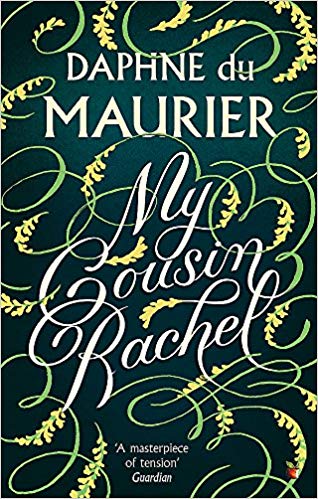
My Cousin Rachel, by Daphne du Maurier
Sinuous and opaque, set in the mid-19th century and taking advantage of all the gothic atmosphere that period entails, du Maurier also gives us within the novel a character simmering with the desire to become a woman on her own terms rather than those given her by men. The motivations of Cousin Rachel are not obvious, but tug at the reader, forcing one to question her at every turn. She seems the model of the grieving Victorian wife. But has she set a clever plan into motion? Did she marry twenty-five-year-old Phillip’s uncle only to poison him and gain the estate now deeded to Phillip? Has she come to Cornwall to weave a story of her innocence, to make Phillip think every generous (and frankly stupid) gift of jewels and allowances and finally the manse itself was thought of by him and him alone as the “hero?” Does she poison him, too? Is the last will legitimate or a forgery? My Cousin Rachel leaves all these questions to dangle—even past the final scene, in which she may or may not have deserved her ending. The book is one of du Maurier’s best, with a woman smoldering and cold by turns, a woman one sympathizes with and reviles at the same time.
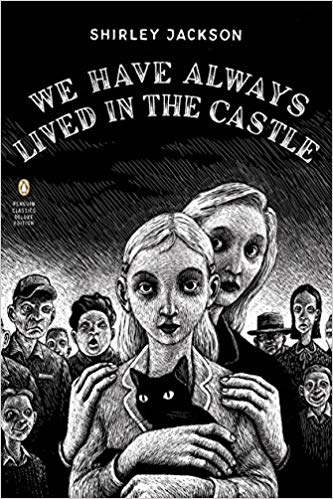
We Have Always Lived in a Castle, by Shirley Jackson
Shirley Jackson’s novel takes both dread and the unspoken and twists them with cool, unemotional language. Author of The Haunting of Hill House and The Lottery, she is a master at the “unsaid.” Two sisters, Constance and Merricat, live in isolation with their wheelchair-bound uncle. He spends most of his time trying to remember exactly what happened when the rest of the family was poisoned by arsenic that had been put in the sugar bowl. Constance was blamed for the murders, but has been acquitted of murdering the family, at least in the court of law. She cleans and cooks and keeps as far away as possible from the villagers. But the villagers, in typical Jackson fashion, never forget the crime. A cousin barges into the sisters’ lives and upends their particular and controlled world. How gothic can we get? A house burnt to a crisp, a sense of utter self-imposed isolation and the unspoken? Spoken of once, and once only. We are never told outright why the family was murdered, and Merricat and Constance never look back on that horrible poisoned meal with remorse. Jackson is a master of cold dread and characters missing parts of their souls, yet trying desperately to remain “normal.”

Affinity, by Sarah Waters
While many would choose Fingersmith as the most Gothic of Sarah Waters’ books, my vote goes to Affinity. The novel harkens back to the great gothics of the previous centuries and plays on all the tropes. Margaret Prior, a naïve young woman with a dark secret of attempted suicide, chooses to improve herself by visiting female inmates at Millbank Prison. She soon finds and finds herself drawn to and then entangled with Selina Dawes, a Spiritualist imprisoned for assault. The world she portrays is pure gothic, with the stone-clad maze of a jail, the gray-white skies, the strange wardens, the lying maid, and Selina Dawes, the compelling, manipulative, and desperate prisoner who can conjure flowers from thin air. And how she plays on Margaret’s sympathies and affections! Like Cousin Rachel, Selina can be read in multiple ways, and this unease with knowing her true motives creates a marvelous ending.
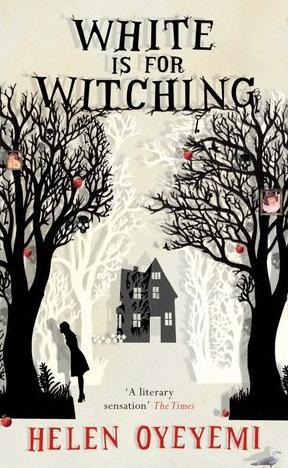
White is for Witching, by Helen Oyeyemi
This ambitious and ambiguous literary gothic/horror follows twins Eliot and Miranda Silver after the death of their mother to a stray bullet while she was in Haiti. It is, at first, a story of grief and the way families move around and through the pain of loss. Miranda suffers from pica, eating only non-edible objects such as chalk and rocks. Yet, she has just been released from a mental institution, and isn’t the most stable, which creates a remarkably unreliable narrator. She sees ghosts—particularly the ghosts of the Silver women who preceded her—her mother Lily, grandmother Jennifer, and GrandAnna, whose house the Silvers now reside in and which Miranda’s father has turned into a bed and breakfast. The narrative jumps from character to character – Miranda, Eliot, Ore (Miranda’s lover and, like Miranda, someone who also feels “other” in the world), and the house itself. The house protects and imprisons the generations of Silver women. At one point, Miranda comes across her mother, grandmother and GrandAnna, all dead, seated around a dining table, writhing in tightly-laced corsets and padlocks on their mouths. The house wants only the Silver women, and works to boot everyone else out (the elevator is particularly dangerous). The novel is unsettling, with trailing ends and unanswered questions. Do the ghosts exist or live under the skin of Miranda herself? Is it a tale of mental deterioration or a story of an evil house? Either way, the danger resides in the women and in the almost perceptibly female house.
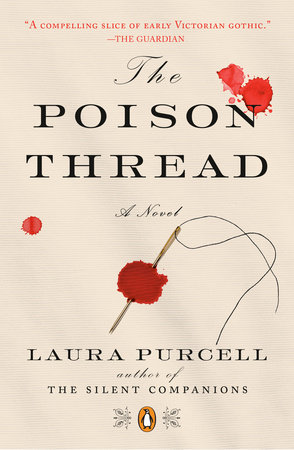
The Poison Thread, by Laura Purcell
Laura Purcell’s The Poison Thread follows a similar set up as Affinity. We have Dorothea Truelove, a pampered young woman who chooses to visit those less fortunate than her in prison. She is obsessed with phrenology, sure to the point of near madness that the science of measuring the skull will be useful in helping change the paths and behaviors of those who suffer from bumps to their skull that signify great combativeness, or secretiveness, and other such maladies. She is introduced to a young girl of 16, Ruth Butterham, a seamstress who has murdered many people, either through accident or on purpose. And here begins the weave of Ruth’s tale—how the hate she feels for those who have wronged her is sewn into the fabrics and clothing she creates. She is left to the devices of the sinister Mrs. Metyard and her mother, Kate, who offer fine clothing for the rich in the front of their shop, and keep the seamstresses, beaten and half-starved, in the back. For most her short life, Ruth’s needle is a fatal weapon, and her vengeance keen. But is she mad? Is she a murderer? Does she control a sinister, unnatural power or does it control her?
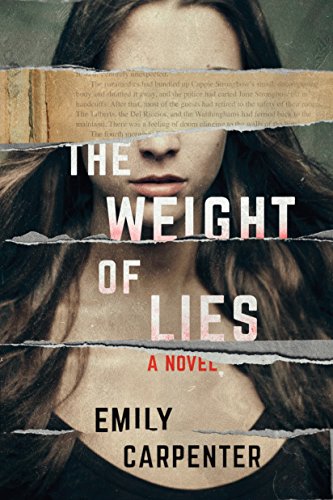
The Weight of Lies, by Emily Carpenter
In Emily Carpenter’s modern-day gothic, a mother, Frances Ashley, writes a horror novel that becomes a bestseller – and may or may not be true. Her daughter Meg lives in the shadow of her mother’s fame, not able to find her own way. Meg is offered a contract to write a tell-all book about her mother and the book, Kitten. Meg sees this as a way to break off completely with her mother, and jets off to Bonny Island, a long, low, isolated island of the southern eastern seaboard with one run-down hotel, a band of wild horses, and the real-life woman Frances Ashley accused of murder in her novel. Doro Kitchens—the Kitten to the cultish readers of the book—might or might not have murdered another girl when she was young. Meg is soon entangled in the secrets and stories of the island, in the said and unsaid, in the lies and delusions of Doro Kitchens. The twists come fast and furious, and the overarching dread is as thick as the humid air.
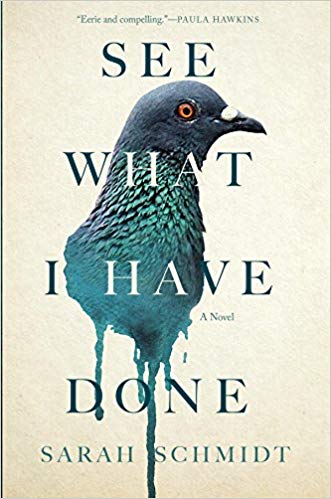
See What I Have Done, by Sarah Schmidt
Lizzie Borden had an ax…In Sarah Schmidt’s novel, we are brought into the Borden household a few days before the horrific event. It is as if we are a member of the household, sharing the intimacies and frustrations of a family already out of order in a house too small for the people it holds. It is not just Lizzie we hear from, but her father, the maid, her sister, and a stranger. The minutes tick by. The father goes out. The mutton soup is most likely rancid. Lizzie visits her pigeons in the barn. Simple moments that become a terrible whole. The father and mother will die. That is a given. Lizzie will show not an ounce of regret or despair. She didn’t do it, she claims, so why should she feel either? Schmidt’s control of the tale creates one of the most ominous and surprising novels I have ever read.

















